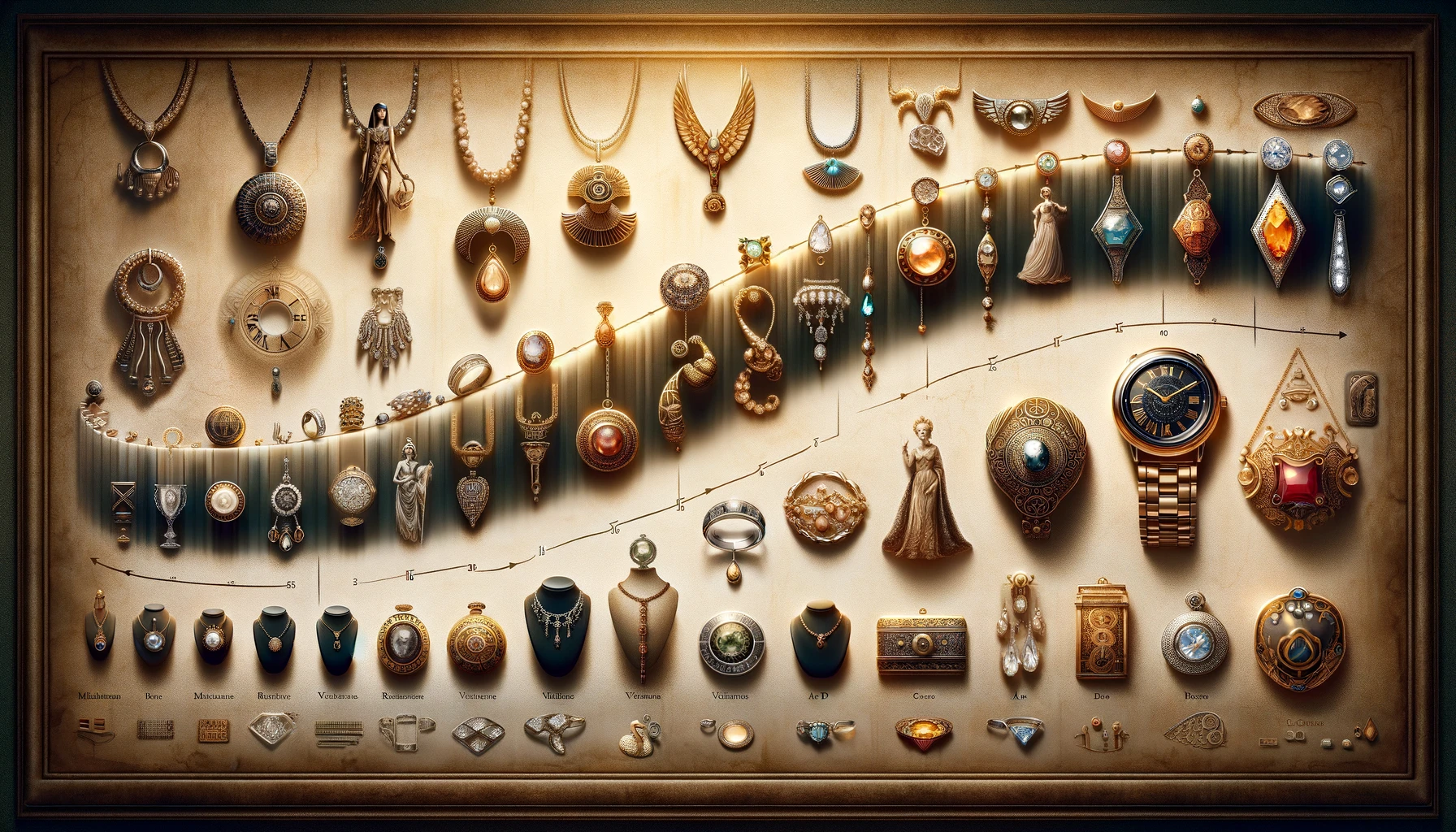The Evolution of Jewelry Design Through the Ages
Evolution of jewelry design has been a significant part of human culture for thousands of years. From the ancient civilizations to the modern era, the design of jewelry has evolved and changed, reflecting the shifts in fashion, technology, and societal values. In this historical overview, we will trace the changes in jewelry design from ancient times to the present day.
Ancient Times: Symbolism and Natural Materials
In ancient times, jewelry served a variety of purposes beyond mere adornment. It was often used as a symbol of status, wealth, and power. The materials used for jewelry were primarily sourced from nature, such as shells, stones, bones, and feathers.
One of the earliest known forms of jewelry was found in ancient Egypt, where gold and precious gemstones were highly valued. The Egyptians believed that jewelry had magical and protective properties, and it was often buried with the dead to accompany them into the afterlife.
In ancient Greece, jewelry design was influenced by mythology and religion. The Greeks adorned themselves with intricate gold and silver jewelry, featuring motifs of gods, goddesses, and mythical creatures.
The Middle Ages: Symbolism and Craftsmanship
During the Middle Ages, jewelry design continued to be influenced by symbolism, but craftsmanship and intricate detailing became more prominent. The use of gemstones, such as diamonds, rubies, and emeralds, became popular among the wealthy elite.
Religious symbols and motifs played a significant role in jewelry design during this period. Crosses, crucifixes, and religious figures were commonly incorporated into jewelry pieces, reflecting the strong influence of the Church.
Artisans and goldsmiths honed their skills during the Middle Ages, creating intricate designs using techniques such as filigree, enameling, and gemstone setting. Jewelry became a way to display wealth and social status, with elaborate pieces worn by royalty and nobility.
The Renaissance: Humanism and Individuality
The Renaissance period brought about a shift in jewelry design, influenced by the revival of classical art and the rise of humanism. Jewelry became more personal and individualistic, reflecting the wearer’s taste and personality.
During this time, gemstones were cut and polished to enhance their brilliance, and new techniques such as cameo carving and intaglio engraving were developed. Jewelry designs featured intricate details, including floral motifs, portraits, and symbols of love and devotion.
The Renaissance also saw the emergence of jewelry as a form of self-expression for women. Necklaces, earrings, and bracelets became popular accessories, and the use of pearls and gemstones in jewelry design became more widespread.
Modern Times: Innovation and Diversity
In the modern era, jewelry design has become more diverse and accessible. With advancements in technology and the discovery of new materials, designers have more freedom to experiment and create unique pieces.
Art Nouveau, Art Deco, and the modernist movements of the 20th century brought about significant changes in jewelry design. Organic and geometric forms, bold colors, and innovative materials such as plastics and synthetic gemstones became popular.
Today, jewelry design continues to evolve, with a focus on sustainability, ethical sourcing, and customization. Designers are incorporating recycled materials, fair-trade gemstones, and innovative techniques to create beautiful and meaningful pieces.
Conclusion
The evolution of jewelry design through the ages reflects the changing tastes, values, and cultural influences of each era. From the symbolism and natural materials of ancient times to the craftsmanship and individuality of the Renaissance, and the innovation and diversity of modern times, jewelry design continues to captivate and inspire us. Whether as a symbol of status, a personal expression, or a work of art, jewelry will always hold a special place in human culture.

